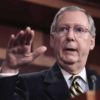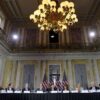Introduction
Banks and mortgage servicers accused of foreclosing homes improperly are being put under the microscope by regulators, who will recommend in January if extra supervision is needed, a senior Treasury Department official told the Financial Stability Oversight Council today.
The council – made up of key financial regulators charged with preventing a repeat of the 2008 financial markets collapse – spent its second meeting in part discussing the foreclosure crisis that has introduced the term “robo-signing” into the American lexicon. But any decisions by the council, chaired by Treasury Secretary Tim Geithner, were put off until another monthly meeting.
Michael Barr, assistant secretary for financial institutions, said his foreclosure task force has found “widespread and … inexcusable breakdowns” in the foreclosure process. Barr said he would deliver a report in January that will scrutinize the banks’ behavior and “determine supervisory actions that may be needed.”
“These problems must be fixed,” added Barr, who is expected to soon leave the administration and return to the University of Michigan law school.
Clearinghouses and systemic risk
The council also moved forward with how it will define which clearinghouses could pose a “systemic” risk to the financial system and need additional supervision. Such clearinghouses underpin and guarantee many financial transactions such as derivatives or swaps.
Under the Dodd-Frank reform law, the Commodity Futures Trading Commission and the Securities and Exchange Commission have already begun drafting regulations for how derivatives clearinghouses must operate. But the handful of clearinghouses that are eventually designated as “systemically important” will get closer supervision and oversight.
If the council’s short history is any indication, it will soon be digging through an electronic mountain of comments from lobbyists and the public.
More than 1,500 comments were submitted in response to the council’s October invitation for the public to sound off on how it should designate “systemically important” non-bank financial institutions. With those suggestions in hand, the council plans to issue a proposal in January, Geithner said.
“We have received thousands and thousands of comments on the two initial requests for comment we’ve put out,” Geithner said. “One of the great strengths of our process in the United States is you’ll be able to see these regulations in draft before they are finalized. And that helps make sure that the people around this table in this room are better informed about how to make sure we’re achieving the objectives of the law, of the regulations, making them work in ways that are practical.”
Another priority for the council during the next few months is to simplify credit card agreements and greater transparency to mortgage disclosure forms, he said.
More troubled banks
Shortly before the council opened its meeting, the Federal Deposit Insurance Corp. announced that the number of U.S. banks on the agency’s list of troubled institutions rose to 860 at the end of the third quarter of 2010 — the highest since early 1993.
While the number of banks on the list went up, the total assets held by the 860 problem banks was $379 billion, a decline from $403 billion in assets held by 829 problem banks in the prior quarter, according to the agency led by Sheila Bair, who sits on the Financial Stability Oversight Council.
So far in 2010, a total of 127 U.S. banks have failed.
Read more in Inequality, Opportunity and Poverty
Inequality, Opportunity and Poverty
The investment industry threatens state retirement plans to help workers save
States wrestle with impending retirement crisis as pensions disappear
Inequality, Opportunity and Poverty
As IRS crusades against Americans hiding money offshore, Latin American tax cheats flock to U.S. banks
IRS event today on plan to force banks to report foreign nationals’ accounts


Join the conversation
Show Comments